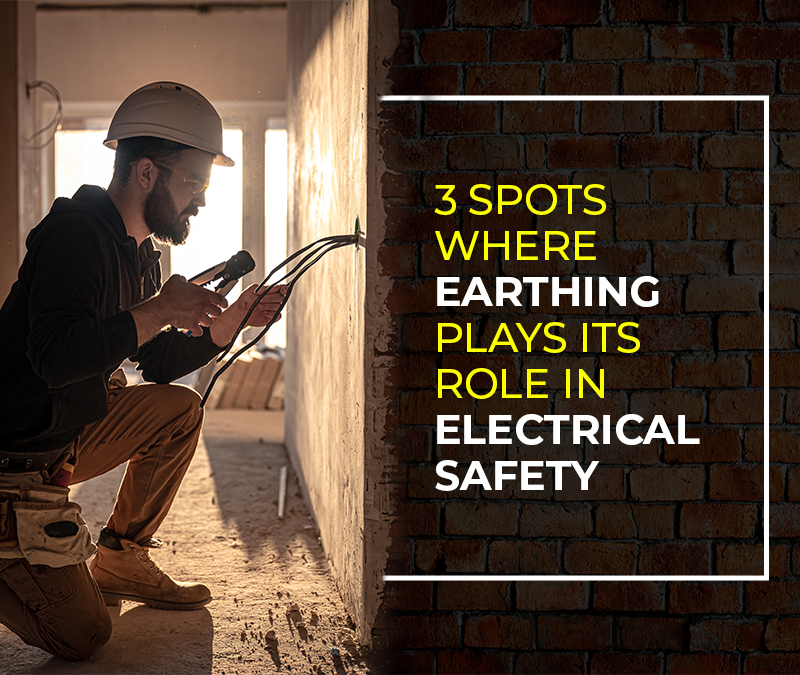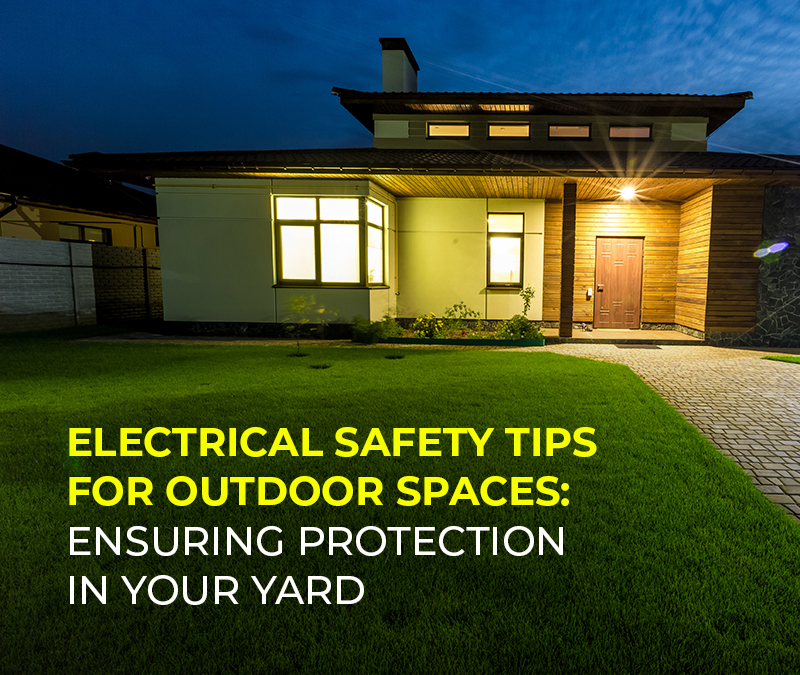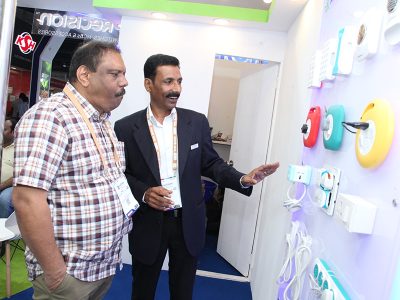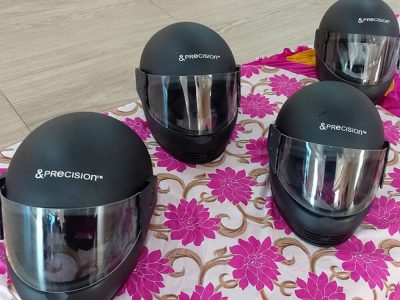
5 Electrical Hazards in Indian Residential Areas and How to Avoid Them
May 18, 2023
6 Energy-Saving Tips for your Home & Office
June 15, 20233 Spots Where Earthing Plays its Role in Electrical Safety
Ever wondered why the top pin on a 3-pin plug is thicker and longer?
So that it’s the first to contact the current and the last to disconnect.
This means that, in case there is a faulty leakage in the outlet, the current won’t use your precious body to get earthed, but flow through the top pin instead.
The thickness of the top pin also prevents you from mistakenly inserting it into the live and neutral points; if you do that, all your miniature circuit breakers will trip, the electrical contacts in the outlet will burn, and the short circuit will be of such a high magnitude, you’ll hear a loud pop!
The top pin is the earthing pin. Earthing, as you may already know, is an essential aspect of electrical safety in any building. It’s how we connect electrical infrastructure to the ground, to prevent electrical shock, fires, and explosions.
In this blog post, we will discuss the importance of earthing and its role in electrical safety. We will also discuss 3 important electrical amenities that can help achieve proper earthing.
Earthing Prevents Physical Injury
Short circuits are more common than you think.
Due to unforeseen circumstances, the neutral and live wires mistakenly connect, and there is an enormous surge of electric current. People are always in danger of this, even to the point of fatality!
Earthing protects us from the current by providing a path for it—to the earth. So, instead of the current flowing through your body, it would get dissipated into the ground near your building. The earthing wire also aids in the circuit breaker “tripping off” the electric current to the circuit that has the fault.
Earthing Prevents Fire Hazards
Secondly, earthing prevents electrical fires.
A small percentage of electrical appliances at home (microwave ovens, hair dryers, televisions, washing machines, etc.) can have faults within their mechanisms that cause a short circuit. Further, when electrical equipment becomes overheated, it starts fires that quickly spread and cause significant damage.
Earthing provides a safe path for electrical faults and excess current to flow to the ground, which helps prevent overheating and the possibility of electrical fires.
Earthing Saves Your Equipment
Thirdly, earthing helps to stabilize voltage levels and reduce interference from external mishaps.
When electrical equipment is not properly grounded, it can cause voltage fluctuations that can damage equipment or lead to inaccurate readings. Then, there are lightning strikes that also can ruin your laptops and refrigerators.
Earthing protects expensive equipment, electrical apparatus, and personnel from the high voltage surges and lightning discharge.
Now, let’s discuss the equipment that can help achieve proper grounding.
One of the most common grounding devices is the earthing wire, which is a wire that connects the electrical equipment to the ground.
Earthing wires are typically green or bare copper and can be found in electrical switches, miniature circuit breakers, 3-pin sockets, and other electrical equipment.
Electrical Switches
Switches are devices that control the flow of electricity to various electrical devices or equipment. A switch that is properly grounded ensures that any electrical faults or excess current is safely directed to the ground, which helps prevent electrical shock and fires. Additionally, switches that have built-in ground wires help provide a secure path to ground, ensuring proper grounding.
Circuit Breakers
Circuit breakers are devices that automatically switch off the electrical circuit when they detect a fault or excess current. Miniature circuit breakers that are properly grounded ensure that any electrical faults or excess current is safely directed to the ground, preventing damage to electrical equipment and potential fires. Additionally, circuit breakers with built-in ground wires help provide a secure path to ground, ensuring proper grounding.
3-pin Sockets
3-pin sockets are a type of electrical outlet that includes a ground pin. The ground pin provides a safe path for electrical faults or excess current to flow to the ground, preventing electrical shock and fires. 3-pin sockets that are properly grounded ensure that electrical equipment is safe to use and helps protect people and property from electrical hazards.
In conclusion, grounding is a critical aspect of electrical safety, and proper grounding is essential for ensuring that electrical equipment and circuits operate safely and reliably. Grounding helps protect people from electrical shock and fires, stabilizes voltage levels, and reduces interference.
Electrical equipment like switches, circuit breakers, and 3-pin sockets that are properly grounded are essential for achieving proper grounding and ensuring electrical safety. You can find them at reputed electrical switches manufacturers like Precision Electricals.
It is important to note that proper grounding requires the involvement of a qualified electrical contractor or electrician. They can help ensure that electrical equipment is grounded correctly and up to code, preventing any potential hazards. Additionally, regular inspections and maintenance of electrical equipment and grounding systems are necessary to ensure that they are functioning correctly and providing the necessary protection.



































































